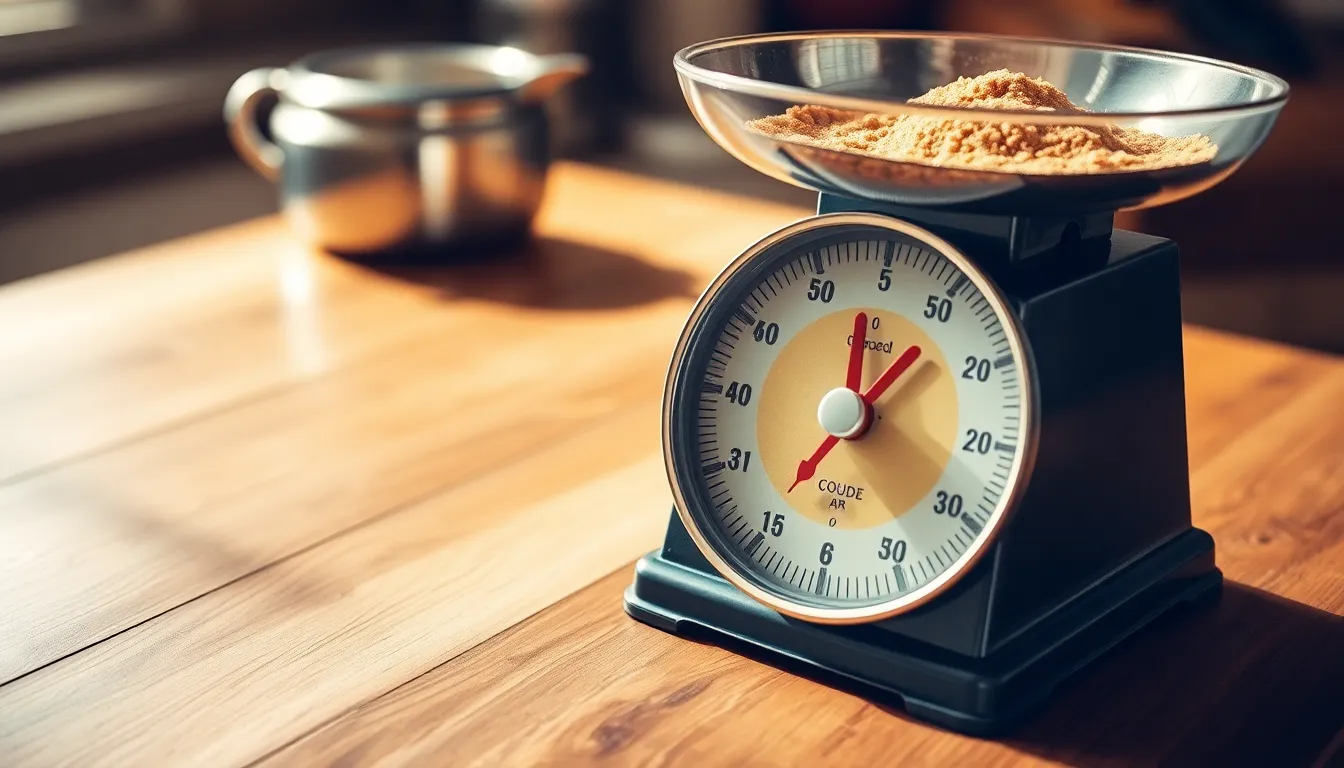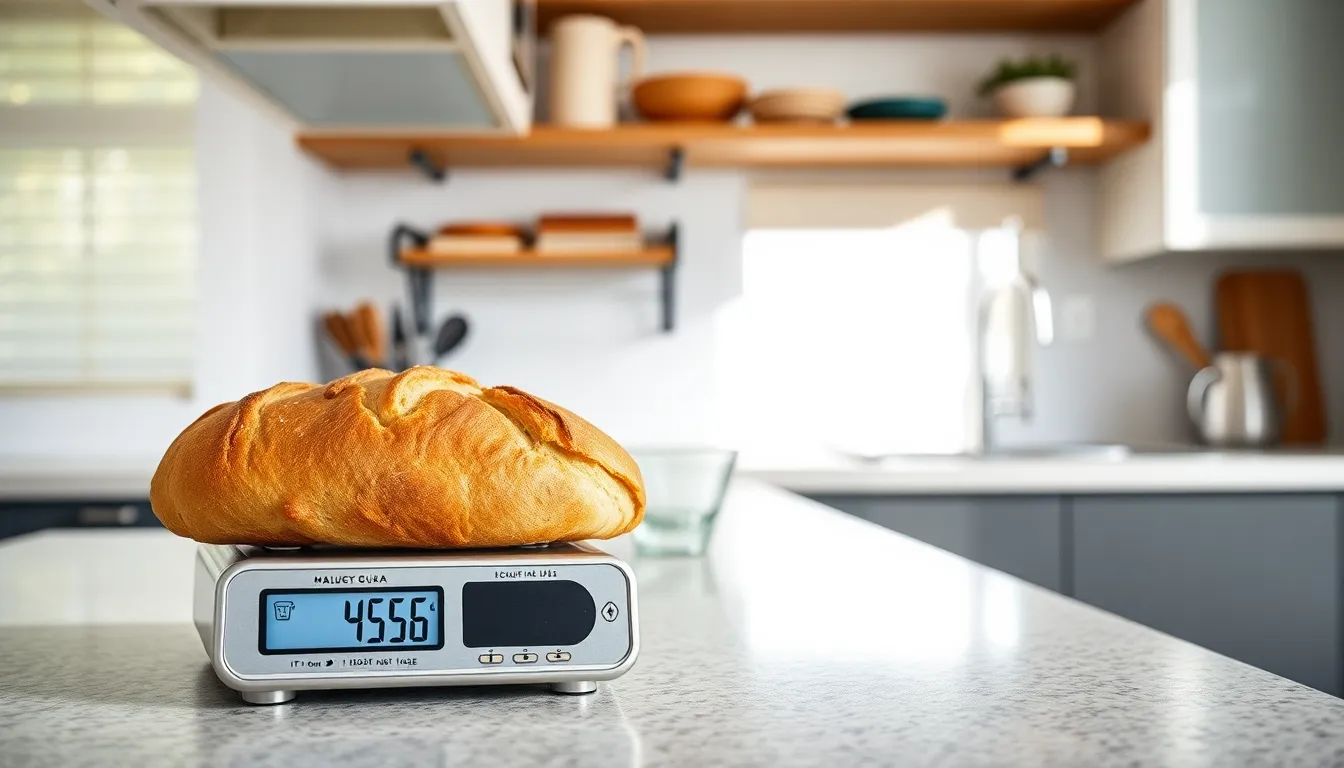Ever found yourself in a heated debate over how many grams are in a pound? If so, you’re not alone. This age-old question has baffled many, sparking everything from friendly banter to full-blown arguments at dinner parties. But fear not, because diving into the world of weights and measures can be both enlightening and entertaining.
Table of Contents
ToggleUnderstanding Weight Measurements
Weight measurements can sometimes create confusion. Grams and pounds serve as standard units for measuring mass. The metric system uses grams, while the imperial system employs pounds. One pound equals 453.592 grams. This precise conversion helps clarify weight comparisons between the two systems.
Conversions often require quick reference points. Understanding basic equivalents makes it easier to visualize weights in everyday scenarios. For instance, a common item such as a loaf of bread generally weighs around 500 grams, which is roughly 1.1 pounds. Knowing these relationships facilitates accurate measurements in cooking, baking, and international shipping.
Some scenarios necessitate converting pounds to grams. To achieve this, multiply the number of pounds by 453.592. For example, two pounds equal about 907.184 grams. This straightforward formula simplifies the conversion process significantly.
Weights and measures play a vital role in various fields, including science, nutrition, and commerce. In the culinary world, precise measurements ensure successful recipes. Additionally, manufacturers rely on weight accuracy for proper product packaging and labeling.
Understanding these weight measurements enhances numerous tasks in daily life. Familiarity with grams and pounds fosters effective communication, especially when discussing weight with others. With practice, individuals can grasp these concepts confidently, ensuring that weight-related tasks become an effortless part of their routine.
The Relationship Between Pounds and Grams

Understanding the relationship between pounds and grams facilitates better grasp of mass measurements. Grams represent the metric system, whereas pounds belong to the imperial system.
Conversion Formula
To convert pounds to grams, multiply the number of pounds by 453.592. For instance, 2 pounds equals 907.184 grams. This straightforward formula provides quick conversions, reducing the risk of errors in various applications, such as recipes or shipping weights.
Common Misconceptions
Many people mistakenly believe that 1 pound equals 500 grams. This confusion arises from approximations made in everyday situations. Clarifying that the accurate figure is 453.592 grams helps establish reliable communication regarding weight. Misunderstandings frequently occur during international transactions or cooking, underscoring the importance of accurate conversions. Recognizing this distinction aids in promoting precise measurements.
Practical Applications of Weight Conversion
Understanding weight conversion proves essential in various settings, especially cooking and scientific measurements. Accurate conversions facilitate effective task execution.
Cooking and Recipes
In cooking and recipe development, precise measurements matter. A recipe calling for 200 grams of flour translates to approximately 0.44 pounds. Using accurate conversions ensures the right ingredient proportions. Miscalculating weight can lead to inconsistent results, affecting taste and texture. Many recipes from different countries use grams, highlighting the need for conversion knowledge. Familiarity with these equivalents aids home cooks and professional chefs alike to maintain consistency in their dishes.
Scientific Measurements
Scientific research relies heavily on precise measurements. Grams provide a standard unit for many laboratory experiments, ensuring accuracy in chemical reactions and biological studies. For instance, a substance weighing 100 grams equates to roughly 0.22 pounds. Accurate weight conversions prevent errors in calculations and improve data reliability. Scientists often publish findings in international journals that use metric measurements. Grasping these conversions facilitates clearer communication among researchers across the globe.
Tools for Conversion
Understanding weight conversions enhances accuracy in numerous tasks. Several tools simplify the process of converting grams to pounds and vice versa.
Online Calculators
Online calculators offer quick and user-friendly solutions for converting between grams and pounds. Many websites feature dedicated conversion tools that streamline the process. Just input the desired number of grams or pounds, and the calculator provides the equivalent weight instantly. These resources ensure users don’t have to memorize conversion factors, reducing the likelihood of errors. Popular sites include calculators like Calculator Soup and Unit Conversion.
Mobile Apps
Mobile apps serve as convenient tools for weight conversion, easily accessible on smartphones. Various apps are designed to convert units, allowing users to switch between grams and pounds with a few taps. Many of these applications feature additional functionalities, such as saving frequently used conversions for quick access. Some notable apps include ConvertPad and Unit Converter, which are highly rated for their ease of use and efficiency. These options cater to cooks, scientists, and anyone needing accurate weight conversions on the go.
Understanding the conversion between grams and pounds is essential for anyone involved in cooking science or commerce. Accurate measurements can make a significant difference in recipe outcomes and research results. By grasping the relationship between these two units of weight individuals can navigate international recipes and scientific data with confidence.
Utilizing online calculators and mobile apps simplifies the conversion process making it accessible for everyone. With the right tools and knowledge mastering weight conversions becomes straightforward. This familiarity not only enhances daily tasks but also fosters clearer communication regarding weight across various fields. Embracing this knowledge opens doors to more precise cooking baking and scientific exploration.




